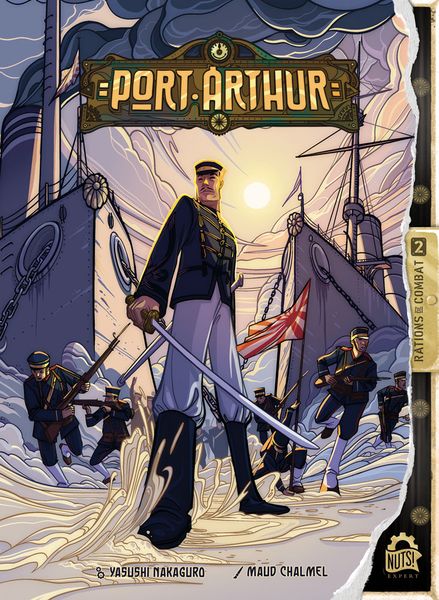Port Arthur (2020) Board Game
Port Arthur is a board game that takes players back to the post-Napoleonic era, specifically focusing on the naval battle of Port Arthur during the Russo-Japanese War of 1904. The game allows players to take on the roles of commanding officers of the Russian and Japanese fleets as they strategize and maneuver their ships in the waters of Port Arthur.
Game Components of Port Arthur
How To Setup Port Arthur
Gameplay Mechanics and Game Objective
The gameplay of Port Arthur revolves around area movement, dice rolling, simulation, and a random turn order. Players must strategically move their ships, engage in combat, and outmaneuver their opponents to achieve victory. The objective of the game is to either destroy the opposing fleet or achieve specific mission objectives, depending on the scenario being played.
Player Experience
#
Pros:
#
Cons:
Personal Thoughts on Port Arthur
Port Arthur is a well-designed and thematic board game that offers a unique gaming experience for those interested in naval warfare and historical simulations. The game’s components are well-crafted, and the attention to detail in depicting the naval battle adds to its overall appeal.
While the game may not be suitable for casual gamers due to its complexity, those who enjoy strategic wargames will find Port Arthur to be a rewarding experience. The pricing and availability of the game may vary, but it is worth considering for enthusiasts of the nautical, post-Napoleonic, and wargame genres.
In terms of alternatives, players looking for similar games may enjoy titles like “Dreadfleet” or “Axis & Allies: War at Sea.” Overall, Port Arthur is a game that is worth your time if you are a fan of historical simulations and enjoy strategic gameplay. However, it may not be suitable for those seeking a more casual gaming experience, and players who prefer larger group sizes may want to consider other options.
Game Components of Port Arthur
How To Setup Port Arthur
To set up the game, each player chooses their side: the Japanese or the Russians. The Japanese side starts with a central position and a small but powerful fleet, while the Russian side must prevent enemy landings and await the arrival of the Baltic Fleet. Players place their ships and troops according to the initial setup rules outlined in the rulebook. The game board is divided into different sea areas and land zones, which are crucial for the gameplay.
Gameplay Mechanics and Game Objective
– Japanese side: Control more zones and ensure an army is in Mukden by the end of the sixth turn.
– Russian side: Prevent Japanese landings and await the Baltic Fleet to secure victory.
Player Experience
**Port Arthur** offers a concise yet intense strategic experience, ideal for those who enjoy wargames and historical themes. The game’s design ensures that each turn is filled with critical decisions, from naval battles to troop movements. Players must balance resource management, tactical maneuvers, and long-term strategy to emerge victorious.
Pros
Cons
Personal Thoughts on Port Arthur
**Port Arthur** is perfect for fans of strategy and wargames who are looking for a game that combines historical accuracy with engaging gameplay. It is particularly suited for players who enjoy tactical decisions and short, intense game sessions. While it may not be ideal for larger groups due to its two-player limit, it offers a rewarding experience for those who enjoy competitive, strategic gameplay.
We are supported by our audience. When you purchase through links on our site, we may earn an affiliate commission, at no extra cost for you. Learn more.

